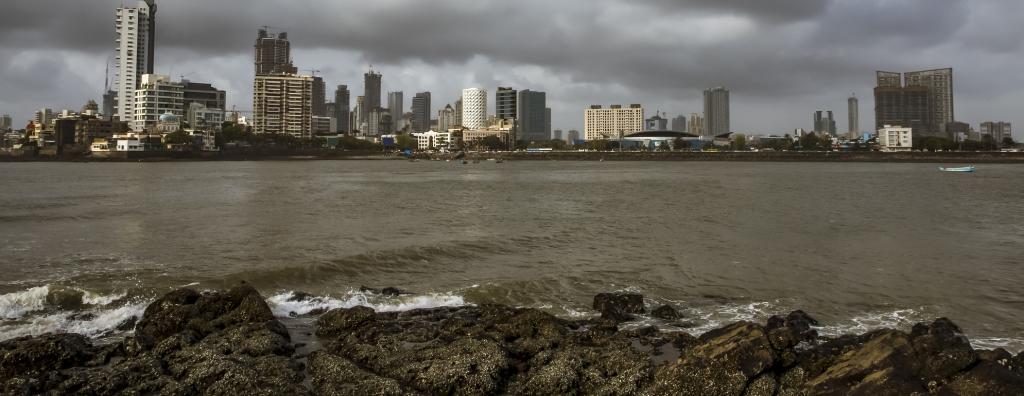

On July 16, the Bombay High Court ordered that construction on the $1.7 billion Mumbai Coastal Road, to be built by reclaiming the city’s inter-tidal western coast, must stop. Here is why



(This story has been corrected to reflect that the proposed project was worth $1.7 billion, not Rs 170 crore. It was first published on July 16)
The Bombay High Court, on July 16, 2019, quashed the coastal regulation zone clearances granted to Mumbai’s civic body and ordered construction on the proposed $1.7 billion (about Rs 12,000 crore) Mumbai Coastal Road project to stop.
Prior to this, on June 18, the Chief Justice of the high court, Pradeep Nandrajog, while expressing concern about the degrading state of environment, passed a notepad to lawyers with a caricature of a human being from the future affected with deformities as a result of pollution.
Nandrajog was hearing eight petitions challenging the alleged lack of approvals for the Mumbai Coastal Road.
The project is one of the most expensive infrastructure development projects, stretching 35.6 kilometres and connecting the entire western coast of Mumbai.
The project aims to create 90 hectares of land by reclaiming the inter-tidal western coast of the city’s shoreline. But citizens’ groups and environmentalists have raised concerns that the project will destroy the region’s unique ecology and the livelihoods of traditional communities who depend on the inter-tidal zone for fishing.
The project has been surrounded by controversies ever since the Union Ministry of Environment, Forest and Climate Change (MoEF&CC) gave environmental clearance in 2017. The ministry submitted ambiguous reasons to give the clearance.
First, MoEF&CC said the proposed project would reduce commuting time by 70 per cent and save 34 per cent fuel per day. It would also reduce the carbon footprint by 1,826 tonnes of carbon dioxide (CO2) per annum.
But the truth is that the vehicles plying on Mumbai’s roads mainly consume non-renewable fossil fuels, and are a major contributor to greenhouse gases, especially CO2. The government could have easily explored rail connectivity, but it chose to back the contractors building this project.
Here, it is important to note that 43 per cent of Mumbai’s residents use the rail network. So, the proposed road will only cater to a small demographic of private vehicle owners.
Second, MoEF&CC claimed the project would not have any adverse impact on tidal behaviour. But scientists say the dumping of rocks on the inter-tidal space would increase daily high tides by up to 1.5 metres, which would be detrimental to the survival of local fisherfolk. The court mentioned this while hearing the petitions.
Third, MoEF&CC said the project would be carried out strictly, in accordance with the provisions of the Environment Protection Act, 1972, and would render the coastal ecology of the area, including flora and fauna, in its original state after completion.
In truth, the damage to all inter-tidal fauna and flora would be permanent where tidal waters will be blocked for reclamation of land. It cannot be replenished. There are no known methods to restore permanently destroyed inter-tidal habitats or shores and bring the marine life back to its original state.
Several studies have identified the presence of the Deccan Plateau on which most of Mumbai’s rocky shores today stand. The Deccan Plateau has been traced to the Mesozoic times — 60 to 68 million years ago — and this is the natural heritage of Mumbai’s rocky shore.
Here, about 340 documented inter-tidal marine life species have been identified. Species like sea cucumbers, gorgonians and corals, which receive protection under the Schedule I species of the Wild (Life) Protection Act, 1972, are found here. The construction of this road will decimate this heritage ecosystem.
The city’s indigenous coastal communities, known as the Kolis, are completely dependent on artisanal fishing within the shallows of this rich, biodiverse rocky shore. There are about 2,000 fishing families living in Worli alone, who travel up to two km into the sea to catch fish.
The government has said it would give monetary compensation, but the families have rejected this offer on the grounds of “intergenerational sustainability of the shore”.
What is needed is a comprehensive understanding to ascertain how to fund railway transport systems rather than building more roads. In the case of marine life and biodiversity, some species that have been documented do not have a baseline data yet.
So it is also imperative to study the plethora of marine wildlife found on the city’s shores. We must first comprehend what kind of sustainable transport system Mumbai needs before building an expensive coastal road, thereby permanently changing the identity of this unique ecological ecosystem.
(The writer is conservation officer with Vanashakti, a Mumbai-based non-profit)
We are a voice to you; you have been a support to us. Together we build journalism that is independent, credible and fearless. You can further help us by making a donation. This will mean a lot for our ability to bring you news, perspectives and analysis from the ground so that we can make change together.
India Environment Portal Resources :

Comments are moderated and will be published only after the site moderator’s approval. Please use a genuine email ID and provide your name. Selected comments may also be used in the ‘Letters’ section of the Down To Earth print edition.